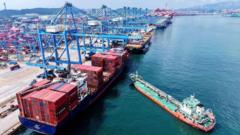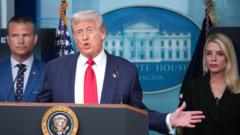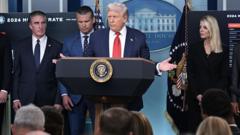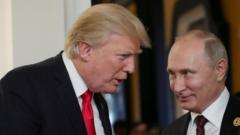As Xi Jinping embarks on a crucial diplomatic tour through Southeast Asia, aimed at reinforcing alliances in the face of U.S. tariffs, the delicate balance for nations like Vietnam and Malaysia becomes increasingly complex.
Xi Jinping's Southeast Asia Visit: Navigating the U.S.-China Trade Tensions

Xi Jinping's Southeast Asia Visit: Navigating the U.S.-China Trade Tensions
China's leader aims to strengthen regional ties amid ongoing trade disputes with the United States, but neighboring countries tread carefully.
China's leader, Xi Jinping, is set to embark on a significant diplomatic tour of Southeast Asia, visiting Vietnam, Malaysia, and Cambodia this week. This visit comes at a time when China's trade relations with the United States are strained due to the imposition of hefty tariffs during President Trump's administration. Xi hopes to strengthen these regional ties as a countermeasure to the impacts of the trade war.
During his visit, Xi is expected to present China as a reliable partner in contrast to the erratic policies of the Trump administration. In Vietnam, the Chinese leader plans to oversee the signing of around 40 agreements, including an initiative that allows Vietnam to secure loans from China for a substantial $8.3 billion railway project designed to connect northern Vietnam to China.
For countries like Vietnam and Malaysia, securing trade agreements with China while simultaneously navigating relations with the U.S. presents a diplomatic challenge. These nations are engaged in seeking leniency from the Trump administration regarding tariffs, making Xi's presence significant during this period of such geopolitical complexity.
With China having emerged as Southeast Asia's predominant trading partner in the past decade, Xi's engagements with these nations signify the ongoing importance of understanding regional dynamics amidst evolving global trade frameworks. His visit begins in Vietnam and is followed by a three-day endeavor in Malaysia, eventually culminating in Cambodia. This tour may have lasting implications as these countries balance their economic interests and political alignments during a turbulent era of international relations.


















